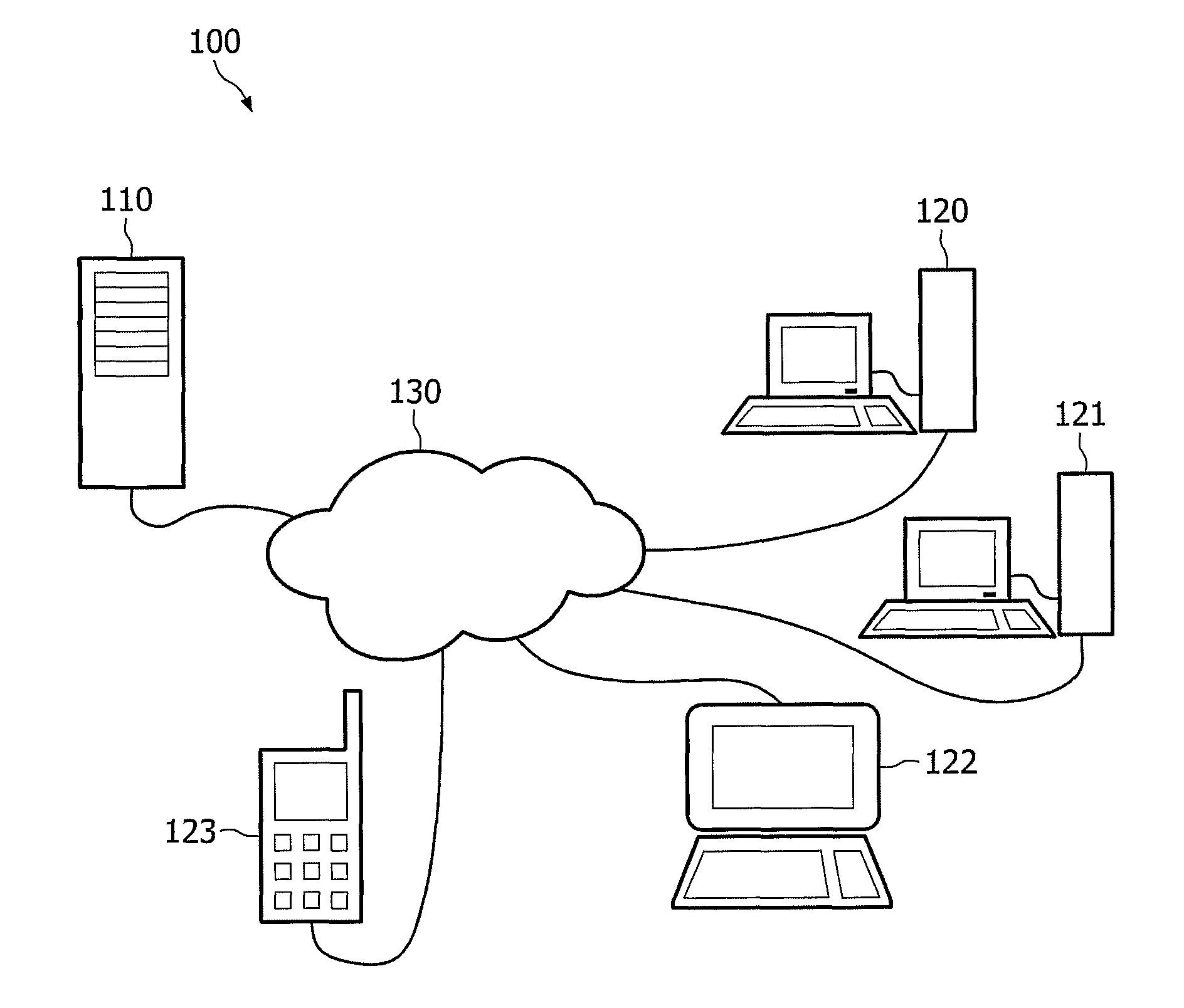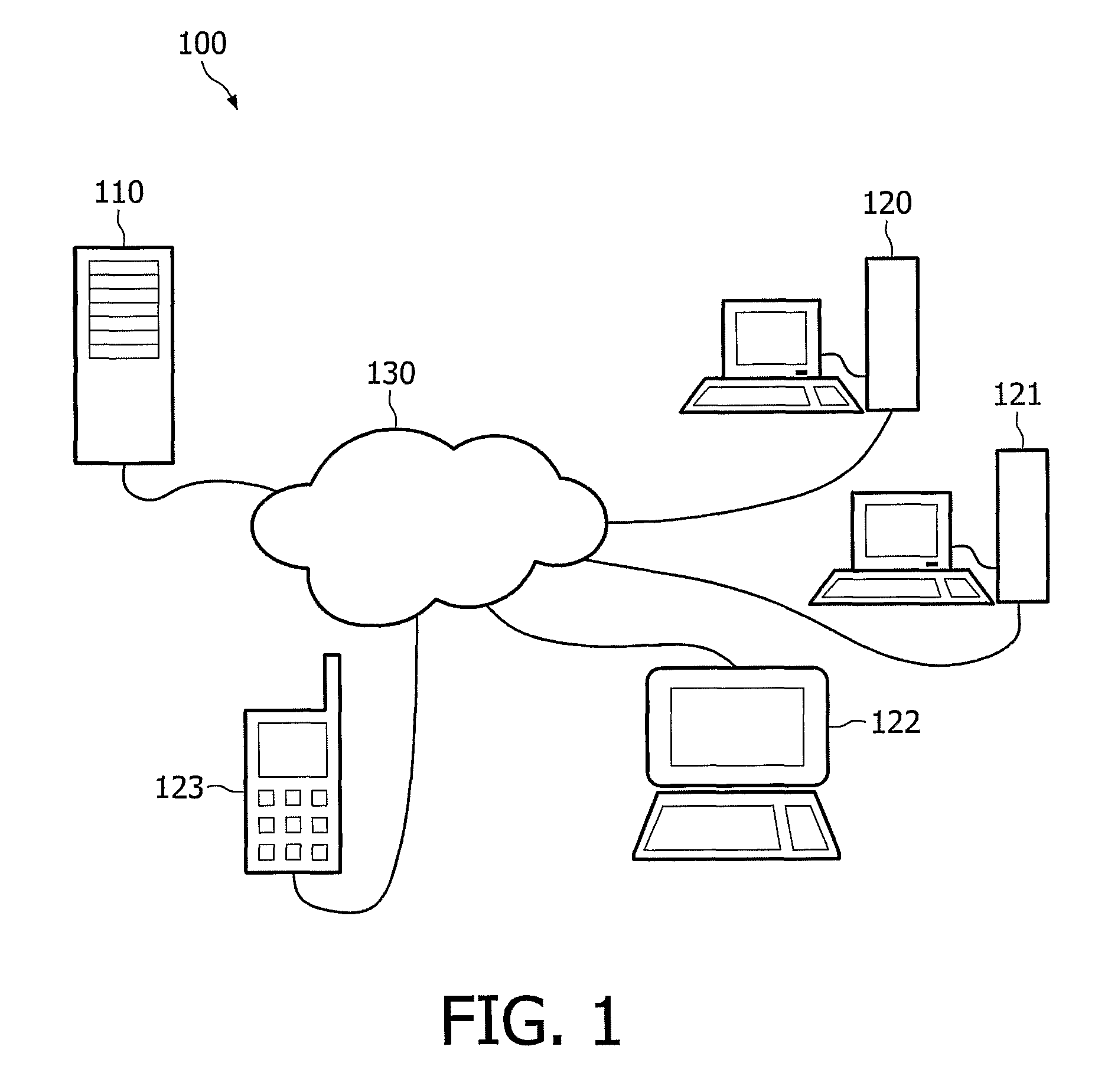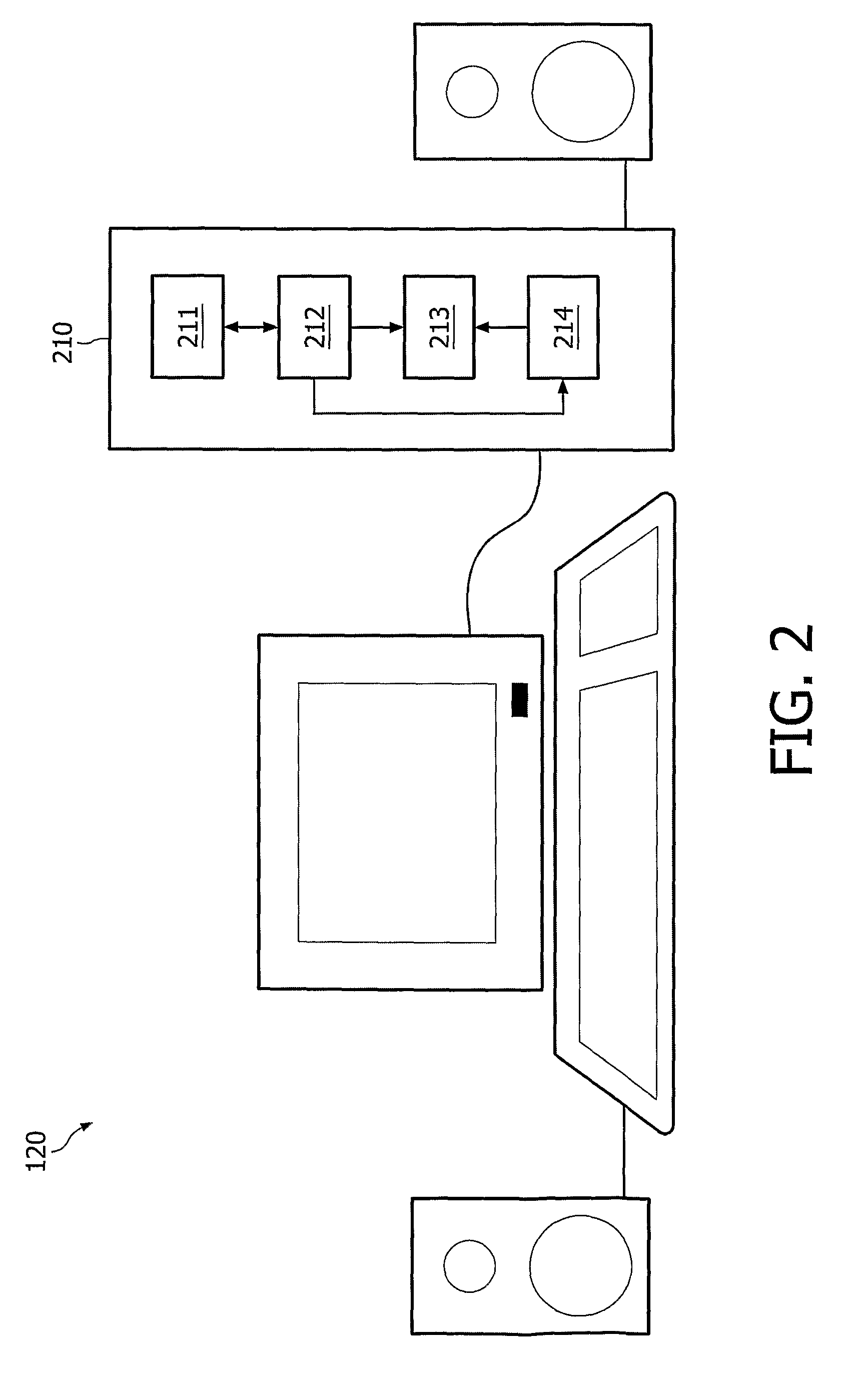Generating statistics of popular content
a technology of popular content and statistics, applied in the field of content generation statistics, can solve the problems of no reporting, uncoordinated and ad-hoc delivery, and difficulty in aggregating popularity indicators, and achieve the effect of generating statistics
- Summary
- Abstract
- Description
- Claims
- Application Information
AI Technical Summary
Benefits of technology
Problems solved by technology
Method used
Image
Examples
Embodiment Construction
[0030]FIG. 1 schematically shows a system 100 comprising a server 110 and a plurality of clients or client terminals 120-123 connected over a network 130 such as the internet. As connecting client terminals to a server over a network is well-known, this will not be elaborated upon further, save to say that any method of doing so now existing or hereafter devised may be used to make this connection possible. The server 110 responsible for generating content statistics may be well known to the skilled person, comprising a processing unit having at least one processor, a memory and a storage, and a communication module such as a network interface for communicating with the clients 120-123 via the network 130. the server is operated by an operating system and specific software for performing the functions and steps a described below.
[0031]The clients 120-123 are equipped with hardware and / or software that makes it possible to obtain and play back audio and / or video content such as movie...
PUM
 Login to View More
Login to View More Abstract
Description
Claims
Application Information
 Login to View More
Login to View More - R&D
- Intellectual Property
- Life Sciences
- Materials
- Tech Scout
- Unparalleled Data Quality
- Higher Quality Content
- 60% Fewer Hallucinations
Browse by: Latest US Patents, China's latest patents, Technical Efficacy Thesaurus, Application Domain, Technology Topic, Popular Technical Reports.
© 2025 PatSnap. All rights reserved.Legal|Privacy policy|Modern Slavery Act Transparency Statement|Sitemap|About US| Contact US: help@patsnap.com



